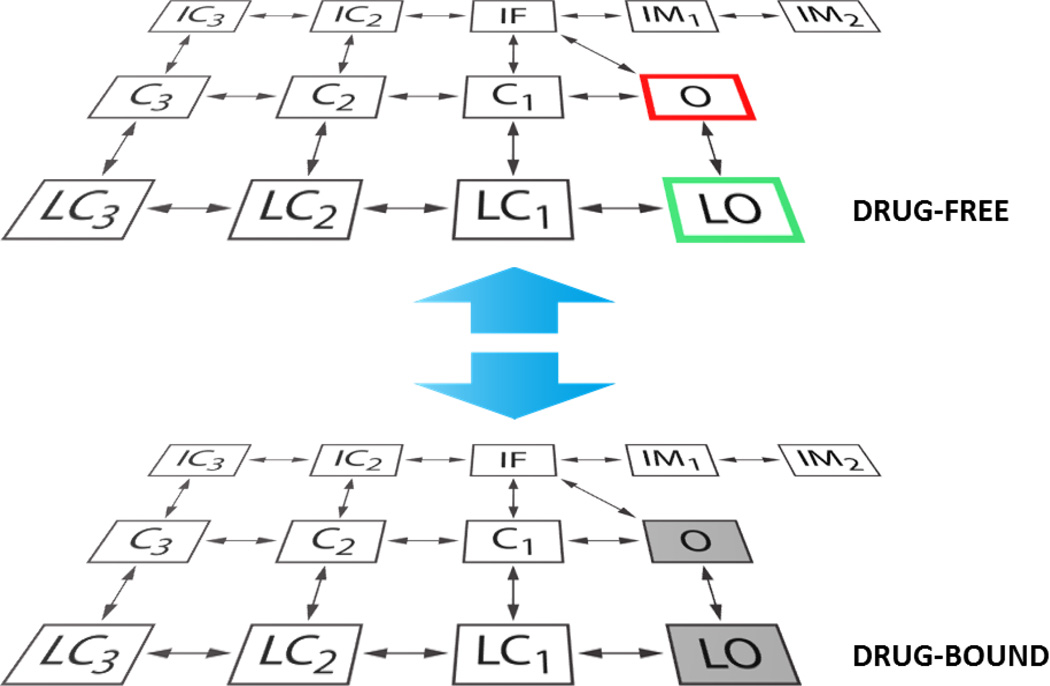Figure 1. INa Markov model schematic.
When no drug is applied, INa is modeled with a 13-state Markov scheme [15, 16] accounting for both canonical and burst gating modes (see drug-free layer in figure). O and LO are respectively the conducting open states for normal and burst mode, and C1-C3 and LC1-LC3 are the corresponding closed states. IF is the fast inactivation state, IM1-IM2 represent intermediate inactivation, and IC2-IC3 are the deeply inactivated states. To model ranolazine interaction with the Na+ channel, we used the extended scheme shown here, assuming that the channel can reside in any state in drug-free or drug-bound conditions (as done in [18, 19]). Transitions between layers are Em- and dose-dependent, and can occur between analogous states only. Ranolazine binding is facilitated when the channel resides in the open states. The drug unbinds rapidly from the closed states, but stays trapped in the inactivated states. O and LO in the drug-bound layer are not conducting states.

